Costing and pricing your creative products and services can be a mine field! We know there’s a lot to think about when costing and pricing your creative work so we asked three very different creatives to share their own costing and pricing tips and ideas with us. And they have been very honest! From their costing & pricing struggles to the mistakes they have made, and how they cost and price their products, commissions and workshops too, and their best personal costing and pricing tips.
Very often we find creatives have not costed their work correctly leaving them with little or no profit when it comes to selling that work! In these uncertain times it is more important than ever to regularly take stock of your business and material costs and factor those costs into the prices you’re charging your customers. We have a very useful post here about how to calculate your cost prices of your products in 7 steps.
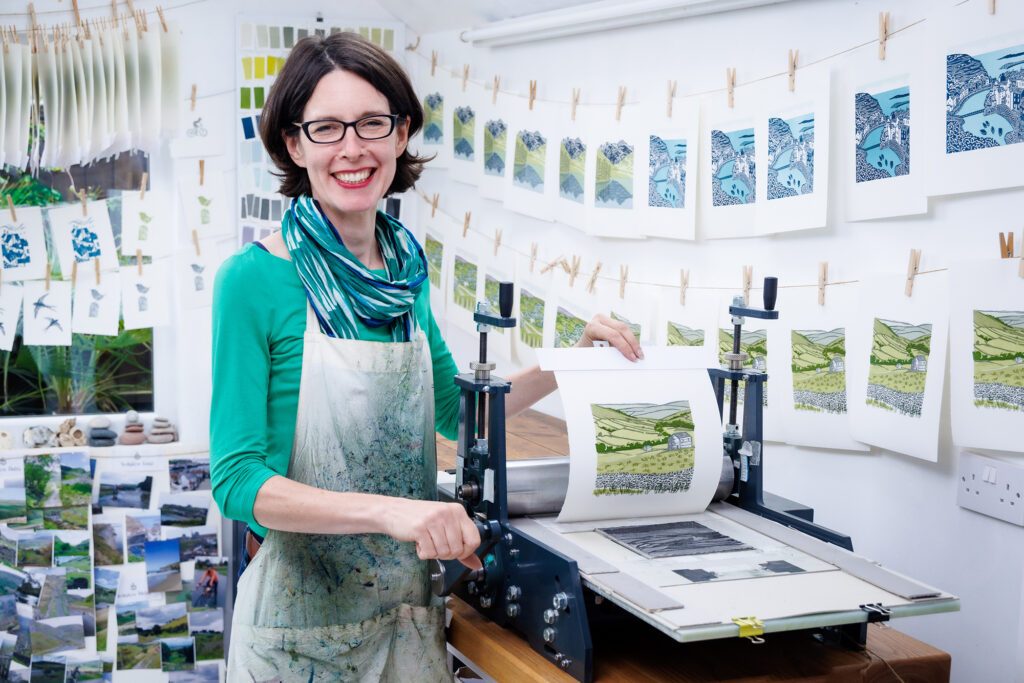
Michelle Hughes – Printmaker & Designer
Tell us a bit about you and your business?
‘I’m Michelle Hughes, a printmaker and illustrator based in York, North Yorkshire. I create original limited edition linocut prints inspired by the British countryside and wildlife. My inspiration comes from my favourite views from walking and cycling in the Yorkshire countryside and Lake District. I sell original prints and greeting cards through my online shop and work from my garden studio, where I teach linocut workshops to small groups. Teaching linocut online courses enables me to teach across the world’.
What aspect of costing & pricing your work do you struggle with?
‘I’ve found it hard to balance the reality of time spent making something with a realistic retail price that customers will pay for a particular product.
My linocut prints are priced by size, rather than the amount of work that goes into them. The more colours that are in a linocut print, the longer they take to make. Each colour is hand printed with 2-3 days of drying time in between. Customers don’t understand how the same sized print could be different prices if they have different amounts of colours in them’.
What mistake have you made that negatively impacted your pricing?
‘I keep timesheets for all the linocut prints I make, whether that is for my own collection or for a commission. I’ve previously costed a commercial linocut commission that took me three times longer than the hours I’d estimated. I originally based my estimate on my time from making similar linocut prints previously. My time sheets record my time physically ‘doing’ things like carving and printing. What I hadn’t factored in was my thinking time. To aid concentration, I carve in 10-minute blocks. In between those blocks of time, I think about how I’m going to carve the next section. I hadn’t kept a note of this and it adds up! Especially on such a big project.
Researching reference images and digitally creating the final composition took a lot longer than I’d estimated too’.
What do you take into account when pricing your work?
‘My background is designing in high street retailer head offices, where designers work closely with the buyers and merchandising teams to develop the ranges. To a certain extent, the target selling prices come first. This could be the pricing structure needed, based on historical sales or the competition. Perceived value tends to come last.
So my pricing primarily is based on researching the market and placing my prints at the right level within that. My prices are more aligned with the higher prices of established printmakers, rather than online marketplaces such as Etsy. Prices on these sites are often low and mean they can’t have factored in their time and materials‘.
Do you offer a ‘bundle’ price? If so, do you think this has encouraged sales?
‘I offer packs of four greetings cards at a bundle price at in-person events and my online shop. This encourages customers to buy packs rather than individual cards. Customers rarely buy individual cards now.
In my online shop, I only sell packs of cards to increase the minimum order value’.
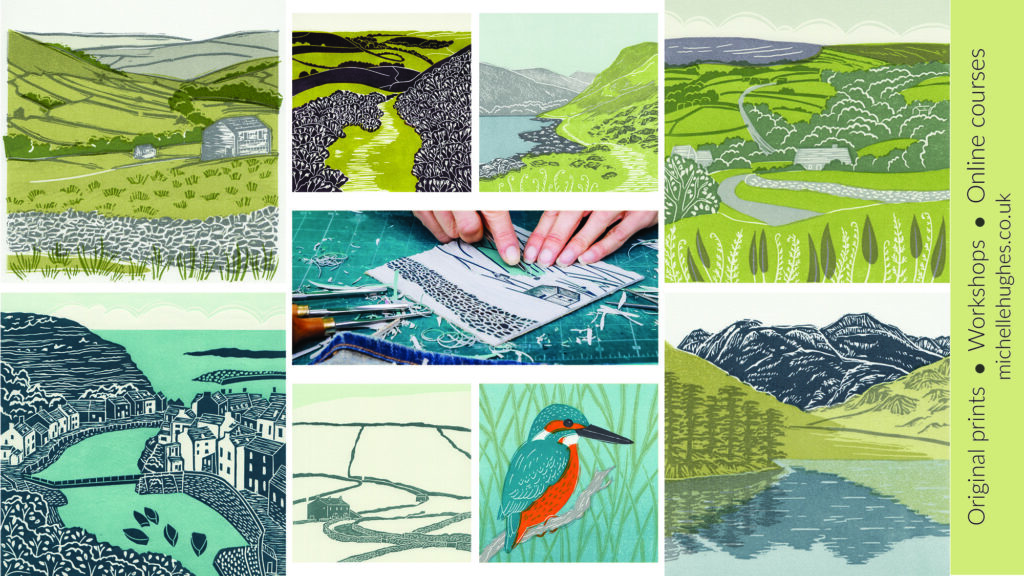
How do you price your commissions?
‘I’ve created linocut illustrations for commercial commissions for marketing materials and books.
I keep time sheets for all the linocut prints I make for my own collections. This gives me a base to work from. I list out the various stages within the commission and estimate the time for each. Usually, these are research, first concepts, a number of client amends if needed, sketching designs, carving these into lino, test printing, adjusting blocks, printing, scanning and the final artwork.
Each time I work on a commission I keep time sheets and at the end of a project assess how much time the project has taken in reality’.
How do you price your workshops?
‘I teach linocut workshops in my York studio. I’ve worked out the costs based on my hourly rate and material costs. I’ve factored in my fixed costs; materials, heating, homemade cake and drinks. I then factor in my time; setting up and preparing the lino and paper for the workshop, and the actual hours spent teaching and cleaning up inks at the end of the day. I should factor in making the homemade cake and marketing too!’
Do you have any tips for wholesale pricing?
‘When I was first approached to sell my greeting cards wholesale I asked their advice. It’s a gallery and gift shop that I have a good relationship with and we both needed to be happy with the prices.
I needed to keep my retail price (RRP) consistent across all selling channels, including my online shop. We worked backwards from my RRP and agreed 2.4xmarkup or 2x markup plus VAT for wholesale prices’.
As costs are rising across almost everything, how often do you check your costs and what do you include?
‘I keep track of material price increases on a spreadsheet and access them once a year. I’ve increased the prices of some products very slightly but it doesn’t reflect my increasing costs. so that I’ve currently held the prices of my original prints and cards. With art being a non-essential purchase I’m already concerned about decreasing sales’.
What ‘s your number one costing and pricing tip?
‘I would recommend keeping time sheets for everything you design and make so that you know the reality of how long something will take. In my experience, making a linocut print for my own collection and commissions often takes three times longer than I think!’
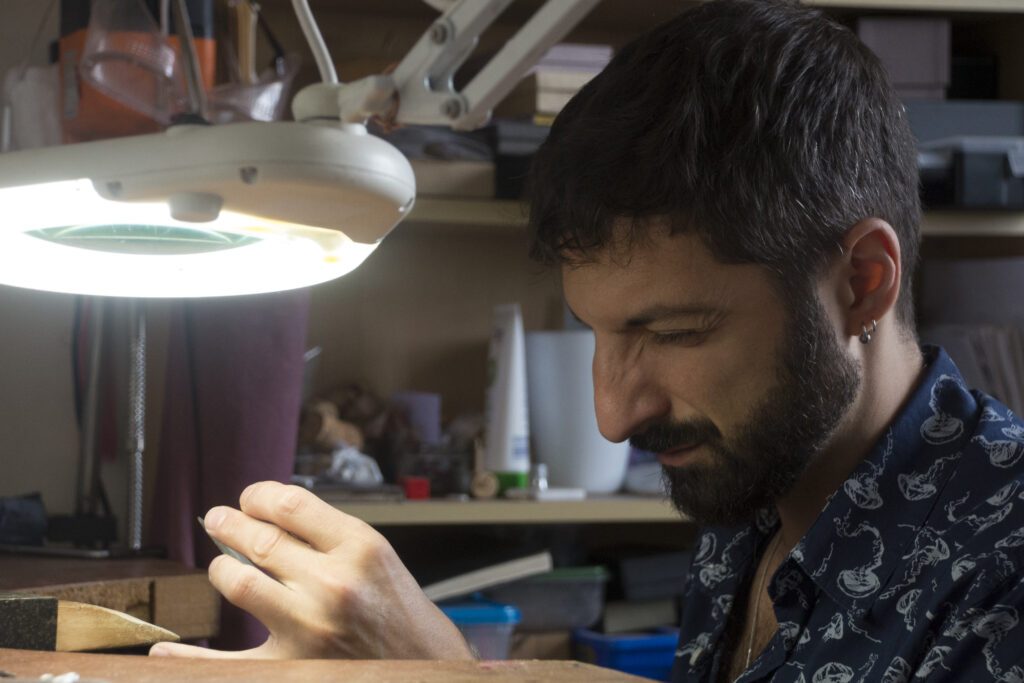
Konstantinos Karanikas – Jeweller
Tell us a bit about you and your business
‘I am a jewellery designer and maker born and raised in Greece and living in the UK for the past 25 years; I am proud to also call myself British now.
My eponymous jewellery business has been going since 2015 and I work with all metals creating collections and bespoke commissions. My work is inspired from the intricacy and variety of earth’s creases, folds and marks and is heavily textured and tactile. Where gems are used they are celebrated for their colour and form. In celebration of nature I use recycled material where possible and ethically sourced gems’.
What aspect of costing & pricing your work do you struggle with?
‘The materials to make something are fixed and there are receipts for them. Additionally, the hourly rate is a result of actual overhead costs etc. Costing and pricing is a sum total of materials, making time and a small profit to get to a retail value.
My continual struggle is the reconciling of the sum total of the above equation (with mark ups and all) with the perceived idea of the work for me and my guesses for customers. The numbers are fixed while my perception is influenced by many differing factors.
I have learnt to make sure to do a rough costing of an idea before even attempting prototypes to balance their actual value and their perceived value; no good having correctly priced items that are relatively too expensive to sell for what they’.
What mistake have you made that negatively impacted your pricing?
‘My direct sales account management background has helped me be careful with my costing items. However, timing and creative desires are also key in my view.
I was keen to take a commission that would be a great creative project and so I offered a competitive quote with almost no margins to secure the job; to appease the designer in me. However, between the deposit being paid and going to casting the Brexit referendum took place that led to a huge spike on the costs of gold. I had to go back to the customer and negotiate a new price otherwise I would be out of pocket. Cautiousness to cost affecting life events and avoiding creative tunnel vision/ego is helpful’.
What do you take into account when pricing your work?
‘With experience I have learned to always ask myself if the final price of a piece can be justified and reflect a perceived value.
As perception and perceived value can be subjective it is important to know and understand your audience. It is them who would validate the perceived value by buying. As costs are increasing I consider if the final price of a piece is aligned to a perceived value and if it is more expensive and I explore how I can add value to the design to achieve a balance of cost and perception; even if this means making the piece more expensive’.
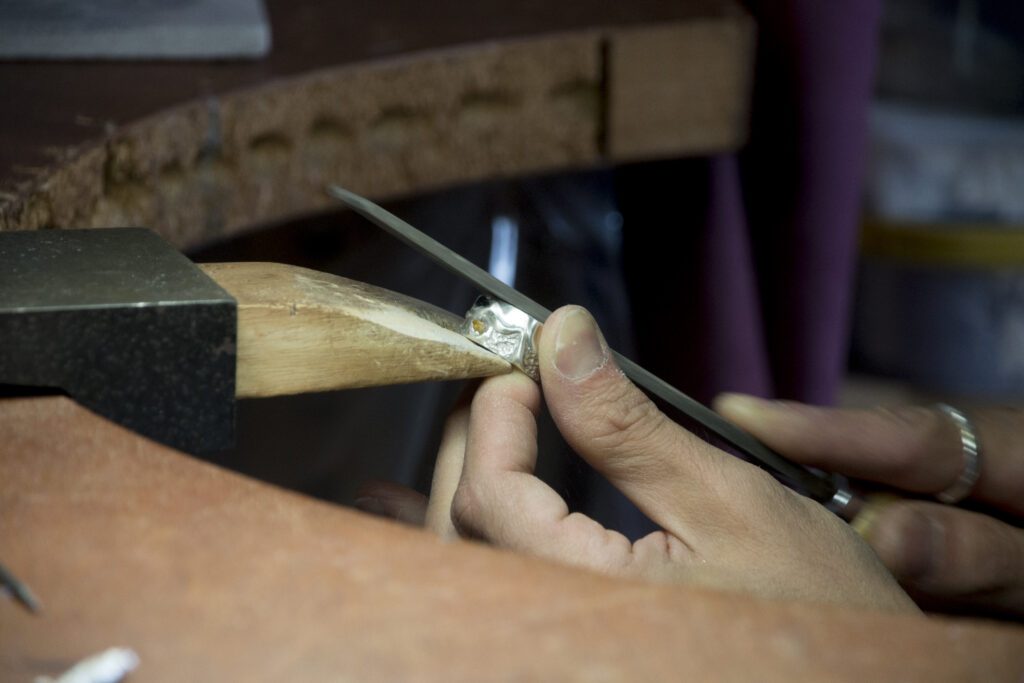
Do you offer a ‘bundle’ price? If so, do you think this has encouraged sales?
‘I find offering a discount on postage for multiple purchases online more successful.
In the structured format of a website I have offered bundle prices on stacking rings and bangles, which lend themselves to this pricing model and this has offered some returns, but it is limited to the aesthetic taste.
However, when in person at a fair or retail environment offering a ‘better price’ for a group of pieces organically chosen from the display creates a more bespoke, tailored, and personable approach to the customer and enhances closing a sale and upselling more pieces’.
How do you price your commissions?
‘I do take on commissions and I find them to be great aesthetic challenges and indeed a great way to win a longer term customer and also a brand ambassador for my business.
One of the first things I consider with a commission is the time it might take to produce the desired brief (this includes initial designs, sketches, client appointments, stone sourcing and making time) and the client’s budget. This will instruct the feasibility of a project for both me and the customer and thereafter instruct metal and stone choices, scale and detail, management of customer expectation and a fair return for me’.
Do you have any tips for wholesale pricing?
‘Depending on the gallery, the commission they keep varies. Some pieces are reserved for me to sell direct only as the wholesale price returns too little margins and a gallery set up doesn’t work.
With other pieces my pricing model is set up to accommodate for the higher end of gallery commissions to make sure that price consistency is kept but I compensate with my profit margins so as not to make the piece too costly.
Covering costs and paying oneself aside, it is an individual business decision to set the wholesale price (particularly if they are being bought rather than SOR) depending on each proposition; would one favour a slightly lower wholesale (without affecting cost covering) to secure a big purchase order / long term selling opportunities?’
As costs are rising across almost everything, how often do you check your costs and what do you include?
‘I try to factor a small buffer in my prices that can absorb some of these costs; it would be an impossible task for a retailer to reprice 30+ makers’ work all the time.
However, given the current state a monthly, if not weekly update of records is a good idea; this can lead to a decision on re-pricing or not depending on what the numbers say.
Also, my commission quotes are only valid for a week or even days if materials are particularly volatile in costs’.
What ‘s your number one costing and pricing tip?
‘Be honest with yourself, devoid of ego of individual beliefs of personal worth or prescribed societal meanings of value by applying certain price tags to your work.
If you have an impostor syndrome voice be mindful of it and be unapologetic in asking for what your skills and time are truly worth; know what you are worth by having a good grasp of your costs, living expenses and experience’.
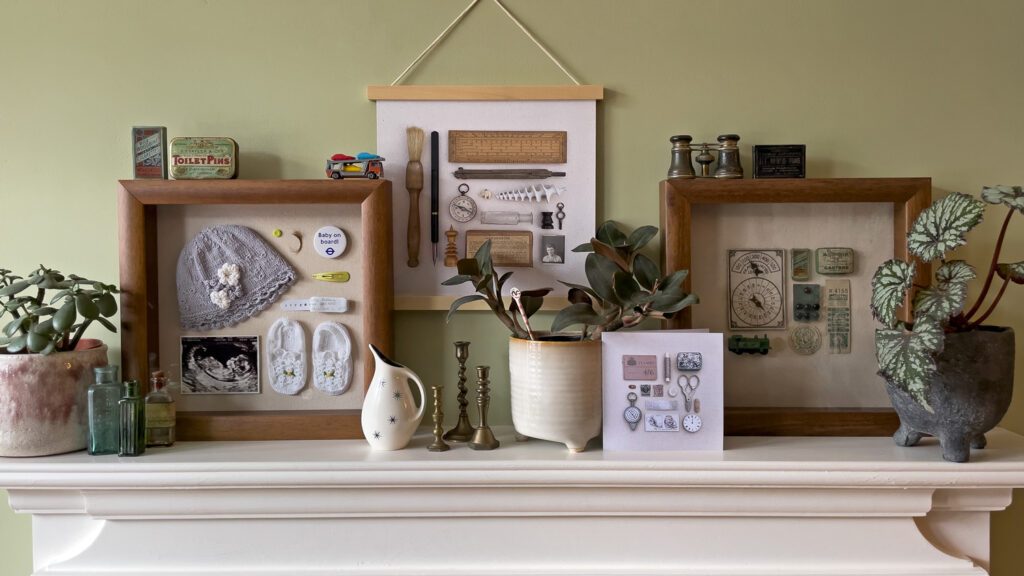
Pippa Ryan – Pippa Kate Design
Tell us a bit about you and your business
‘I’m Pip, an artist and graphic designer living in London with my husband and 2 young boys. I’m an avid collector of vintage keepsakes, I see each piece as a little transportation device to a time gone by and I love researching their stories or creating ones for them. I transform groups of these mundane little collectibles or ‘smalls’ into unique graphic artworks.
I also do commissions, making memory boxes with people’s personal keepsakes, and hold workshops where people can create their own artwork with a little guidance. I also sell a gift range of tea towels, cards, cushions, and lampshades on my website’.
What aspect of costing & pricing your work do you struggle with?
‘Doubt! I feel like my background as a freelance graphic designer has really set me up to be very practical about pricing, and I can happily work my way through the numbers, settling on a total that works and factors in my time and the ‘uniqueness’ of my art.
But then the doubt creeps in, thoughts like ‘what if people think it’s too much’, ‘who am I to charge this much’, and ’what if they never sell’. However, once a couple of customers have happily paid the amount you are asking the confidence starts to build and those thoughts start to take a back seat’.
What mistake have you made that negatively impacted your pricing?
‘When I did my first memory box commission, I really undercharged, I think I was so excited to get the commission that all my pricing knowledge went out the window. For example, I didn’t build in the cost of time communicating with my clients.
The nature of creating something so personal means they are going to want a lot of input and amendment to get it just right and this took way more time than I was expecting. But it was a great learning curve and meant I was more prepared for the next commission that came in’.
What do you take into account when pricing your work?
‘I think in some ways I’m rather lucky with my larger artworks as I think most people who appreciate what I create can see the value in it. Usually, the first question I get asked is “wow, how long did it take you to collect all these things?”
I find this trickier for commissions, as lots of people love the idea, and it seems simple so think they can do it themselves. So really communicating the value of my bespoke service is very important. I do this through case studies and sharing my process. I would recommend The Design Trust’s How to Write Case Study webinar (for our Business Club members only) to help with this’.
Do you offer a ‘bundle’ price? If so, do you think this has encouraged sales?
‘I do offer gift bundles of my greetings cards and tea towels which come all packaged up, but I also allow customers to do a mix-n-match for the same special price.
At Christmas, I found this was a really fantastic way to drive sales of my tea towels as a gift box of 6 is quite a hefty present but saying they could get 6 individual tea towels, all beautifully tied up and labeled for the same price was a big hit. I got the larger sale and they got 6 presents or stocking fillers’.
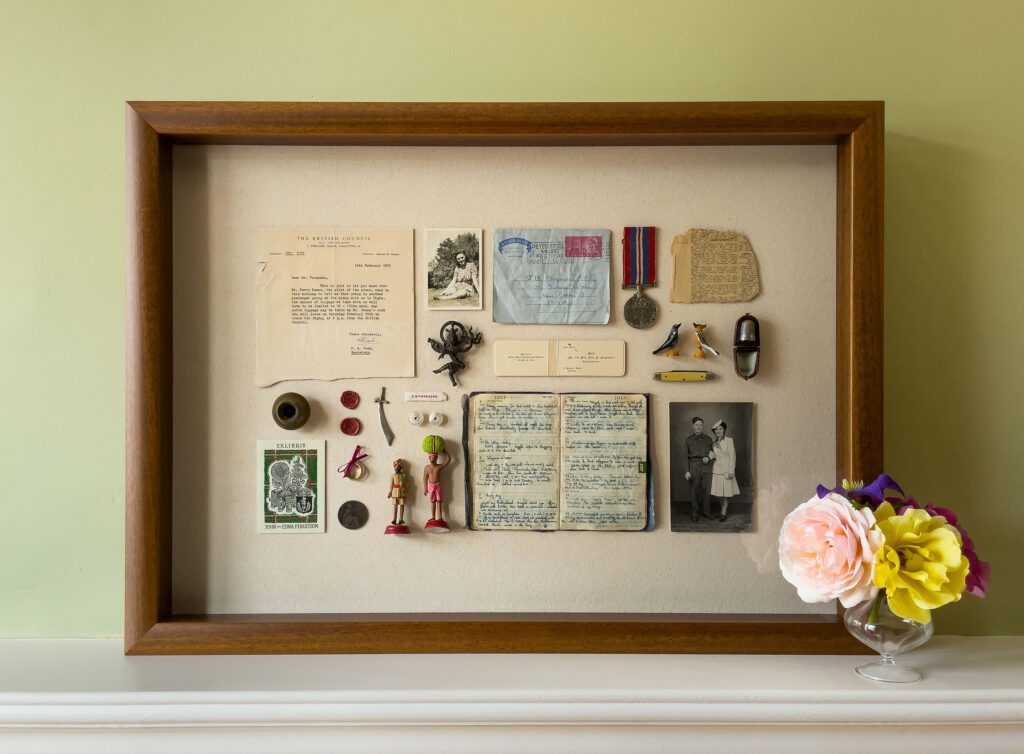
How do you price your commissions?
‘I offer a small, medium, and large size for my Memory Box commissions and each of these has a benchmark ‘starting from’ price. This gives the customer a rough idea of price from the start so they can decide whether this is something they are happy with, without me having to spend a lot of time asking questions and writing up a quote.
If they are happy to proceed, then I will ask them questions about the number of keepsakes they have, what type of objects they are, and what they are made from. This all helps me to work out the complexity of creating their Memory Box and means I can really map out the process, foreseeing any issues or tricky areas before we begin. Surprises are what takes up time and therefore cost you money, eating into your profit for the commission, so foreseeing these beforehand means you can factor them as much as possible’.
How do you price your workshops?
‘I have just started offering workshops. I approached pricing these firstly by listing out all the materials each attendee would need to complete their artwork. I factored in refreshments, my time for the afternoon, and all the communications and prep needed beforehand. As I’m running the workshops at my kitchen table I didn’t have the additional cost of hiring somewhere, therefore I could keep the ticket price under £100 which was important to me and my profit margin as healthy as possible.
This pricing is based on having a full class of 4 people, so if I only had one person it would affect my overall profit from the workshop’.
As costs are rising across almost everything, how often do you check your costs and what do you include?
‘I check my costs each time I plan out a collection, so it is a ‘real-time price’. I catalogue each item I collect so I can find how much I paid for it means it is 100% accurate and I often work with my framer to work to the most economical artwork size so we can get the maximum use of each length of wood, this keeps the cost down and avoids unnecessary waste.
I also buy a lot of my materials in bulk in a sense freezing the price to future increases, although eventually, the increase will catch up to me!‘
What ‘s your Number One costing and pricing tip?
‘Apart from watching as many Design Trust Business Club webinars as you can or attending one of Patricia and Anne-Marie’s wonderful courses.
I would say that my biggest tip around pricing is: “Does it feel good?” You absolutely need to do all the proper number crunching when pricing your work, but if you create one-of-a-kind artwork I always want to feel that the price includes my value and talent as an artist and the fact that they are purchasing something that I can never collect/make again – something that is tricky to put a price on, so it needs to feel good’.
Have you got any costing and pricing tips or questions? Then share with us below in the comments box.
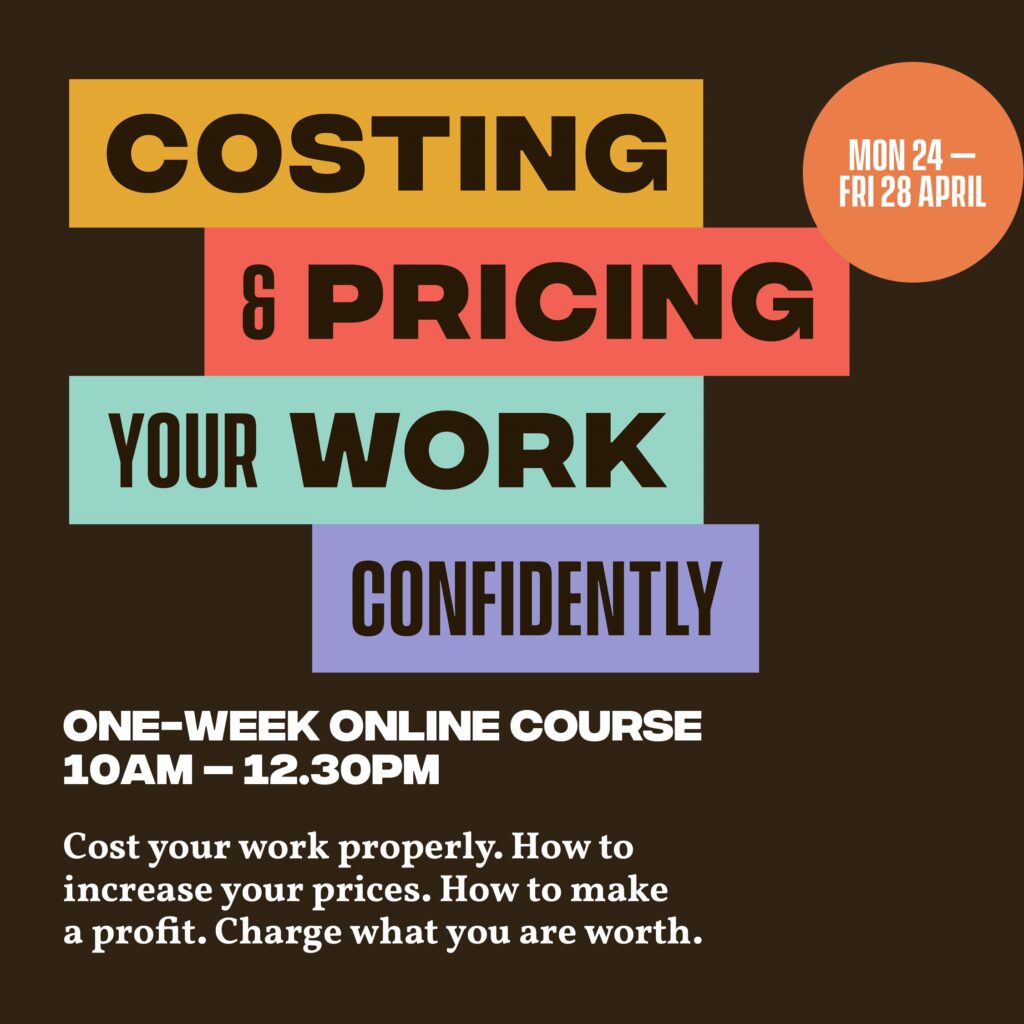
do you need more advice on costing & pricing your creative products & services?
We know that costing & pricing is one of the most difficult jobs for most creatives! Because you need to balance a lot of different aspects … from your costs (that constantly keep going up!) to who you sell to, from your competitors’ prices to your confidence!
We are hosting our popular Costing & Pricing your Work Confidently course again this Spring … in 5 consecutive mornings Patricia van den Akker, the Director of The Design Trust will take you step-by-step through the entire process of costing and pricing your work, to make your business profitable, with loads of ideas to increase your prices and fees confidently.
Find out more about our Costing & Pricing Your Work Confidently here. Starts Monday 24 April 2023.
Can’t make it live? No worries! All 5 sessions will be recorded and you can do this course at your own pace as you will have access to the course till the end of 2023.
Hello, if you are working at home as supposed to renting a studio, what do you need to include in your overheads – mortgage, electricity, water, council tax – anything else?
Hi Lalie
You need to be very careful what you can include in your overheads as a business when you are working from home! You can NEVER include council tax as that’s a personal not a business tax, and you will never be able to claim all of this as a cost. For each cost you would need to calculate how many rooms you have in the house (E.g. 6 rooms but you only can work in one room so it’s 1/6th), how many people live in your property, and how many days/hours you work (e.g 40/24×7) and then do the calculation and you would need to provide proof of your expenses. For details see this HMRC info page.
Therefore it’s often easier to just claim the tax relief of £6,- per week and then you don’t have to provide any evidence.